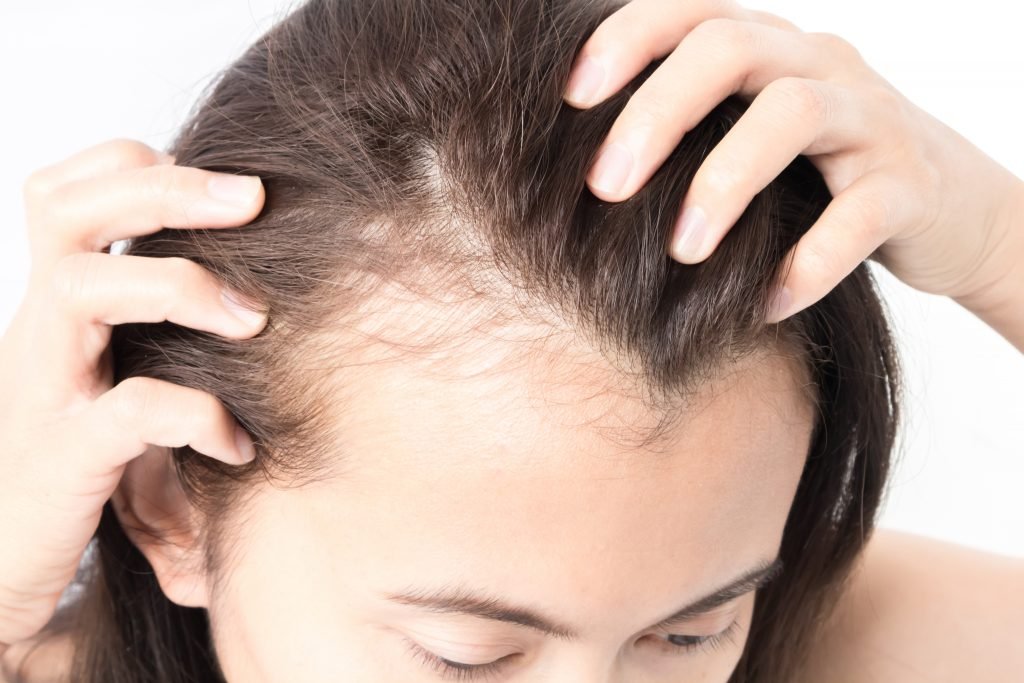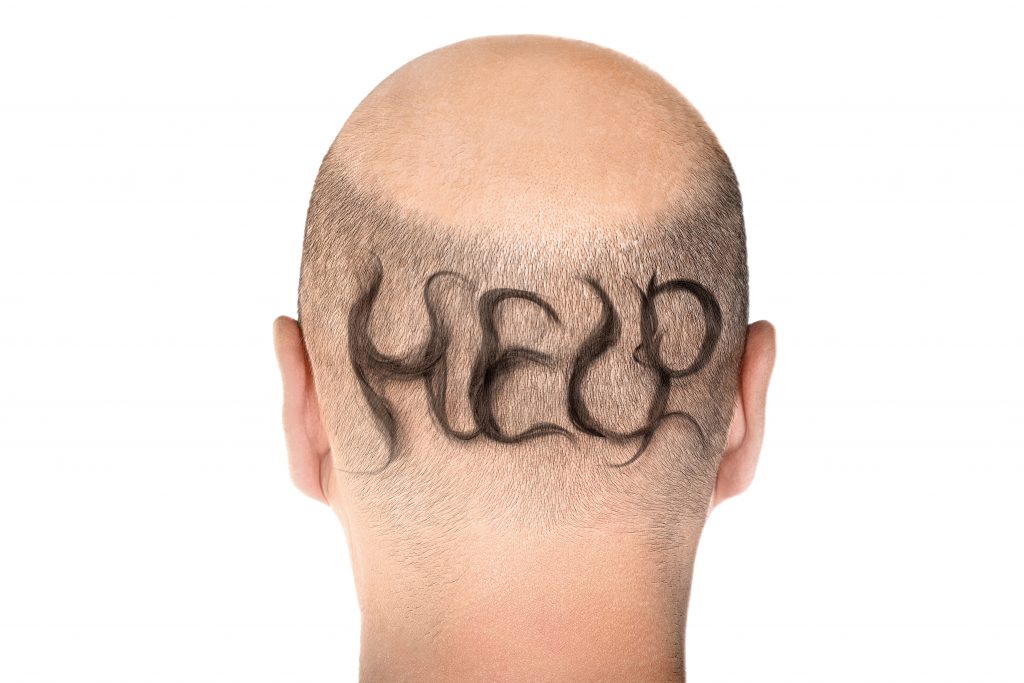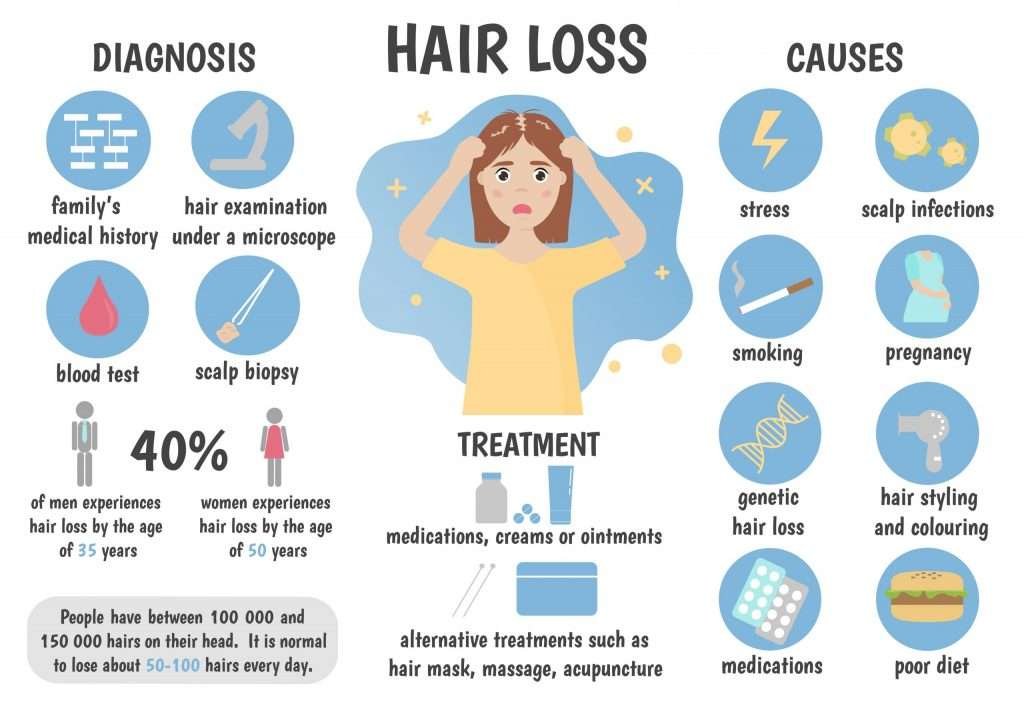Hair Loss Causes...
Why Is This Happening To Me?
Hair Loss Causes
Aesthetic FX wants you to feel 100% comfortable & confident that you are making the right decision in selecting Aesthetic FX.

Hair loss can be a nightmare, and a challenge to deal with it. We will help you fully understand the challenge, and the most cost-effective solutions.
Common Hair Loss Issues:
Pattern Baldness (Alternative names: Alopecia; Baldness; Hair loss)
Pattern baldness is the most common type of hair loss. It usually follows a typical pattern of receding hairline and hair thinning on the crown, and is caused by hormones and genetic predisposition.

Causes, incidence, and risk factors
Hair grows about an inch every couple of months. Each hair grows for 2 to 6 years, remains at that length for a short period, and then falls out. A new hair begins growing in its place. At any one time, about 85% of the hair in your head is in the growing phase and 15% is not.
Each hair sits in a cavity in the skin called a follicle. Baldness occurs when the follicle shrinks over time, resulting in shorter and finer hair. The end result is a very small follicle with no hair inside. Ordinarily, hair should grow back. However, in people who are balding, the follicle fails to grow a new hair. Why this occurs is not well understood, but it is related to your genes and sex hormones. Even though the follicles are small, they remain alive, suggesting the possibility of new growth.
Symptoms
The typical pattern of baldness begins at the hairline. The hairline gradually recedes to form an “M” shape.
The existing hair may become finer and shorter. The hair at the crown also begins to thin. Eventually the top of the hairline meets the thinned crown, leaving a horseshoe pattern of hair around the sides of the head.
Hair loss in patches, diffuse shedding of hair, breaking of hair shafts, or hair loss associated with redness, scaling, pain, or rapid progression could be caused by other conditions.
Signs and tests
Classic pattern baldness is usually diagnosed based on the appearance and pattern of the hair loss. Any atypical hair loss may be caused by other medical disorders. A skin biopsy or other procedures may be needed to diagnose other disorders that cause loss of hair.
Hair analysis is not accurate for diagnosing nutritional or similar causes of hair loss. However, it may reveal substances such as arsenic or lead.
Expectations
Pattern baldness does not indicate a medical disorder, but it may affect self-esteem or cause anxiety. The hair loss is usually permanent.
Complications
Psychological stress
Loss of self-esteem due to change in appearance
Calling your health care provider
Call your doctor if:
- Your hair loss occurs in an atypical pattern such as:
- rapid hair loss
- diffuse shedding
- hair loss in patches
- breaking of the shafts.
- Your hair loss is accompanied by itching, skin irritation, redness, scaling, pain, or other symptoms.
- Your hair loss begins after starting a medication.
- You want to attempt to treat your hair loss.
Prevention
There is no known prevention for pattern baldness.
Lupus
Lupus is a condition of chronic inflammation caused by autoimmune disease. Autoimmune diseases are illnesses which occur when the body’s tissues are attacked by its own immune system.
What causes lupus?
The precise reason for the abnormal autoimmunity that causes lupus is not known. Inherited genes, viruses, ultraviolet light, and drugs may all play some role. Genetic factors increase the tendency of developing autoimmune disease, and autoimmune diseases such as lupus, rheumatoid arthritis, and immune thyroid disorders are more common among relatives of patients with lupus than the general population. Some scientists believe that the immune system in lupus is more easily stimulated by external factors like viruses or ultraviolet light. Sometimes, symptoms of lupus can be precipitated or aggravated by only a brief period of sun exposure.
What are the symptoms of lupus?
In discoid lupus, only the skin is involved. The skin rash in discoid lupus often is found on the face and scalp. It usually is red and may have raised borders. Discoid lupus rashes are usually painless and do not itch, but scarring can cause permanent hair loss. Over time, 5 to 10% of patients with discoid lupus may develop SLE.
Patients with SLE can develop different combinations of symptoms and organ involvement common complaints and symptoms include fatigue, low-grade fever, loss of appetite, muscle aches, arthritis, ulcers of the mouth and nose, facial rash(“butterfly rash”), usually sensitivity to sunlight (photosensitivity), inflammation of the lining that surrounds the lung (pleruritis) and the heart (pericarditis), and poor circulation to the fingers and toes with cold exposure (Raynaud’s phenomenon).
More serious organ involvement with inflammation occurs in the brain, liver, and kidney. White blood cells and blood clotting factors also can be decreased in SLE, thereby increasing the risk of infection and bleeding.
Over half of the patients with SLE develop a characteristic red, flat facial rash over the bridge of their nose. Because of its shape, it is frequently referred to as the “butterfly rash” of SLE. The rash is painless and does not itch. The facial rash, along with inflammation in other organs, can be precipitation or worsened by exposure to sunlight, a condition called photosensitivity. This photosensitivity can be accompanied by worsened of inflammation throughout the body, called a “flare” of disease.
Scarring
Scarring-loss of hair follicles. This causes permanent hair loss. Cutaneous lupus erythematous and fungal kerions are the most prevalent forms of scarring alopecia.
A scar results from the biologic process of wound repair in the skin and other tissues of the body.
Scarring alopecia:
Inflammation of the hair follicles can lead to scarring Alopecia. This form Alopecia is easy to identify because rough patches on the surface of the scalp made up of small blood vessels and tissue are presented. Scarring alopecia has many different causes such as bacterial, viral and fungal infections.
Patchy hair loss with obvious sign of scalp inflammation.
Non scarring alopecia:
A broad category of hair loss types like androgenetic alopecia where the hair follicle remains functional and offers the likelihood that hair loss can be reversed.
We're Here To Help...

We love what we do
We love what we do
The Premier Hair Salon In South Jersey Is Also The Most Affordable Hair Salon In South Jersey.

Stay Safe!
Be Happy!
We’re Here To Help.

856-988-1700

1002 Lincoln Drive West (Next to LA Fitness on Rt. 73) Suite F, Marlton, NJ 08053



